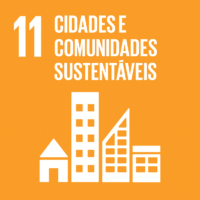Ciência_Iscte
Publicações
Descrição Detalhada da Publicação
Emplacing linked lives: A qualitative approach to understanding the co‐evolution of residential mobility and place attachment formation over time
Título Revista
Journal of Community and Applied Social Psychology
Ano (publicação definitiva)
2021
Língua
Inglês
País
Estados Unidos da América
Mais Informação
Web of Science®
Scopus
Google Scholar
Esta publicação não está indexada no Overton
Abstract/Resumo
Despite growing interest in issues of residential mobility and place attachment in a globalised world, research within Environmental and Community psychology has tended to overlook the ways that interpersonal relations, and wider socio-political and economic structural factors inform place attachment formation amongst residentially mobile individuals. We address this gap drawing on the Human Geography concept of ‘Linked Lives’ (Coulter et al., Progress in Human Geography, 2016, 40(3), 352–374), to conceive the relocation decisions of residentially mobile individuals, and their place (non)attachment to the current residence place, as deeply intertwined with formative place experiences, interpersonal relations, and the structural contexts within which people live (Coulter et al., Progress in Human Geography, 2016, 40(3), 352–374). With the aim of deepening understanding of the co-evolution of residential mobility and place attachment, this paper presents narrative case studies of residents living in a town in Southwest England, with each resident indicating a different variety of people–place relations to their current residence place. Findings indicate that moving intentions and consequent residential place attachment result from complex interactions over time between (a) formative place experiences and settlement identities, leading to preferred types of residence place; (b) interpersonal relations with significant others including family and community members that vary according to life stage events; and (c) structural forces, comprising cultural, economic, and political factors shaping people's lives. Future research could examine how structural changes arising from the COVID-19 pandemic are influencing residential mobilities and attachments to place.
Agradecimentos/Acknowledgements
--
Palavras-chave
Interpersonal relations,Linked lives,Place attachment,Residential mobility,Structural conditions
Classificação Fields of Science and Technology
- Psicologia - Ciências Sociais
- Geografia Económica e Social - Ciências Sociais
Registos de financiamentos
| Referência de financiamento | Entidade Financiadora |
|---|---|
| SFRH/BPD/96061/2013 | Fundação para a Ciência e a Tecnologia |
| UIDB/03125/2020 | Fundação para a Ciência e a Tecnologia |
| 207774 | Norwegian Research Council |
Contribuições para os Objetivos do Desenvolvimento Sustentável das Nações Unidas
Com o objetivo de aumentar a investigação direcionada para o cumprimento dos Objetivos do Desenvolvimento Sustentável para 2030 das Nações Unidas, é disponibilizada no Ciência_Iscte a possibilidade de associação, quando aplicável, dos artigos científicos aos Objetivos do Desenvolvimento Sustentável. Estes são os Objetivos do Desenvolvimento Sustentável identificados pelo(s) autor(es) para esta publicação. Para uma informação detalhada dos Objetivos do Desenvolvimento Sustentável, clique aqui.

 English
English


